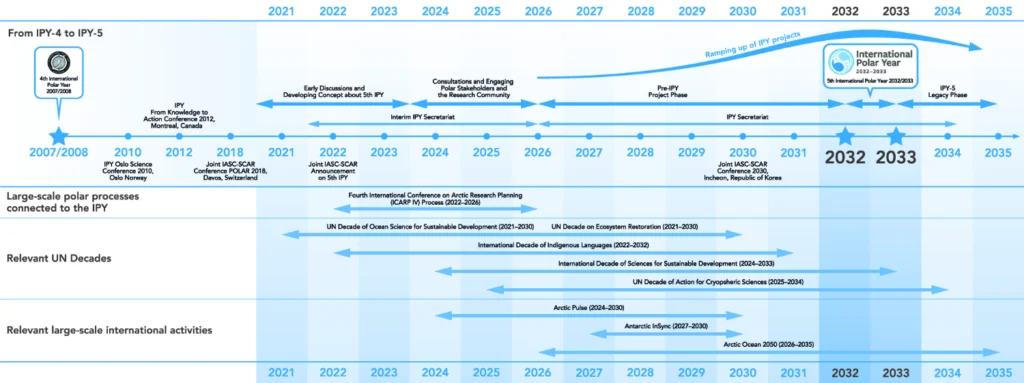Joint international efforts to explore the polar regions have been important undertakings in the past. In 1875, Austro-Hungarian naval officer Carl Weyprecht suggested the first International Polar Year. It was implemented in 1882 – 1883, and organized by the German polar explorer Georg Neumayer. Weyprecht and Neumayer were not satisfied with the traditional individual and national research efforts. Instead, they pushed for a coordinated scientific approach with international partners to research polar phenomena. Through their initiative, 11 nations conducted joint research at 12 research stations in the Arctic and 2 stations in the sub-Antarctic. Since then, there have been three further International Polar Years in 1932 – 1933, 1957 – 1958, and 2007 – 2008.
Many of the most serious consequences of climate change are linked to the drastic changes in the Arctic and Antarctic. Weather extremes, sea level rise, and devastating droughts, floods, wildfires, ocean warming and acidification, and record-low sea ice levels are increasingly occurring. This is affecting ecosystems, economies, and human well-being around the world. It is therefore more important than ever to understand the consequences of rapid change in the polar regions for the global climate and to investigate the effects on biodiversity and human society.
150 years after the first International Polar Year, the 5th International Polar Year is an international program for the joint exploration of the Arctic and Antarctic. Globally coordinated measures are intended to close existing knowledge gaps. This is essential to develop effective strategies to mitigate and adapt to environmental change and to achieve the UN Sustainable Development Goals.
More information here
Call for organizations to join the 5th International Polar Year Planning Group here
5th International Polar Year Timeline
Following their renewed partnership agreement, IASC and SCAR announced that preparatory work has started for a 5th International Polar Year (IPY) in 2032-33.
